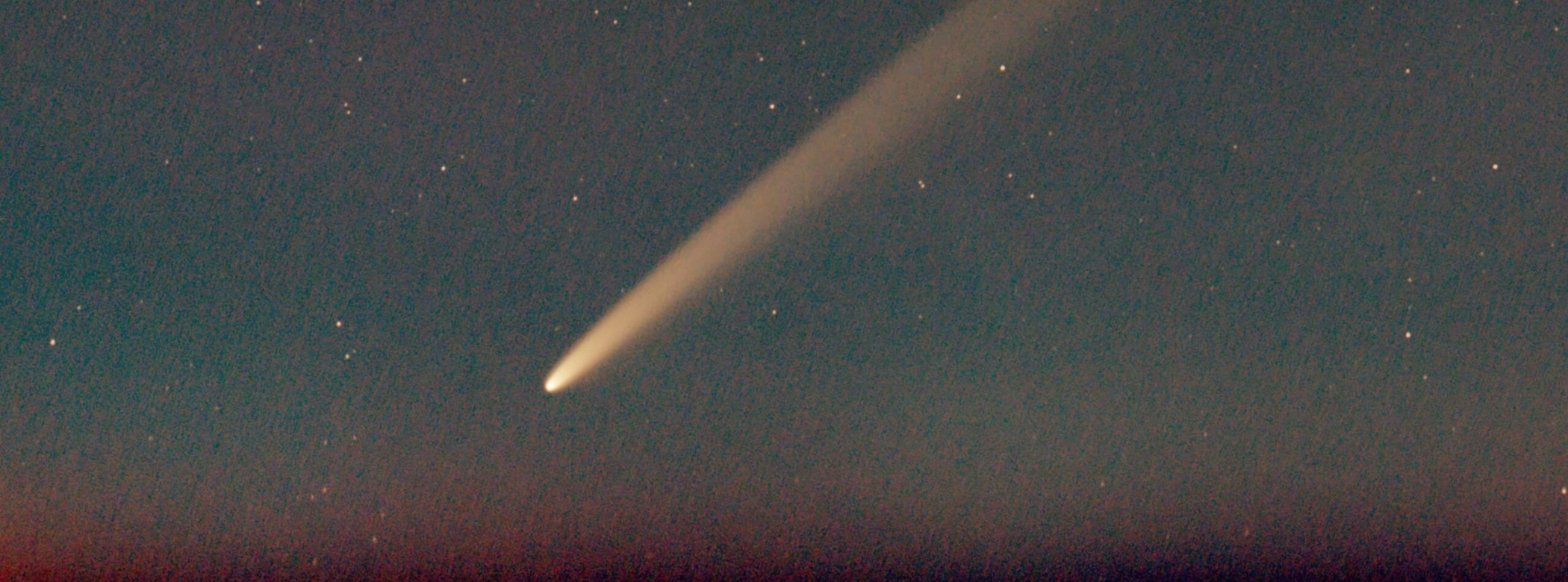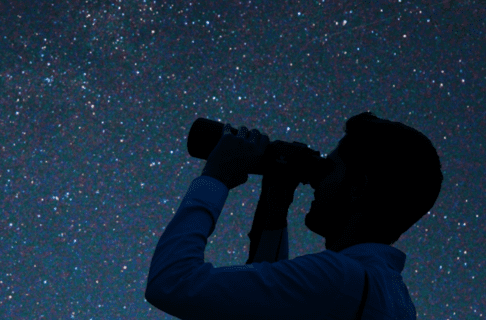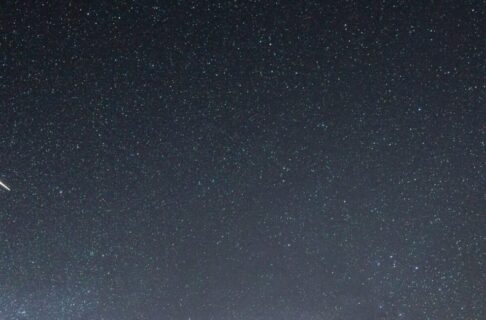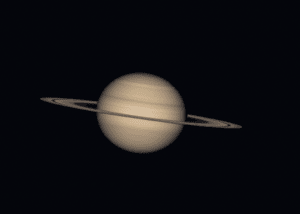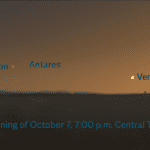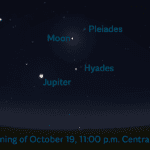UPDATED 2024 Oct 10 0915 CDT
Manitobans will have a chance to catch a comet this October (2024). Comet C/2023 A3, a.k.a. Comet Tsuchinshen-ATLAS, will be visible in our evening sky beginning about October 11. This article will describe how to see the comet yourself and provide a day-by-day description of its period of best visibility.
Based on its behaviour up until October 10, I am tempering my expectations for this comet a bit. It’s still going to be a great sight, but it won’t be as bright as some have been predicting. The comet will likely need binoculars or a camera to spot it while it’s in the bright twilight over the week of Oct 11-16.
However, the comet’s tail is longer than expected, stretching nearly 45 degrees across the sky – that is about the distance from the horizon to halfway overhead. So even though the comet’s head sets soon after the sun, its tail might be visible sticking up above the horizon much later, when the sky has gotten darker. You’ll still want dark skies free of city lights, and binoculars or a camera, to get the best view.
(Note: While written for Manitoba, this article works for anyone in southern Canada, or at roughly the same latitude of 40-50 degrees North anywhere in the world. So, much of Europe and Asia will have similar views.)
(Second note: Comets are notoriously unpredictable. They can undergo outbursts that make them brighten 100x in an hour; they can also fragment or fizzle out without any obvious explanation. This article presents the best predictions available at the time of writing, and will be updated as conditions change.)
(Third note: While another potentially bright comet, Comet C/2024 S1 (ATLAS), was discovered recently, this comet will likely not be visible from Manitoba.)
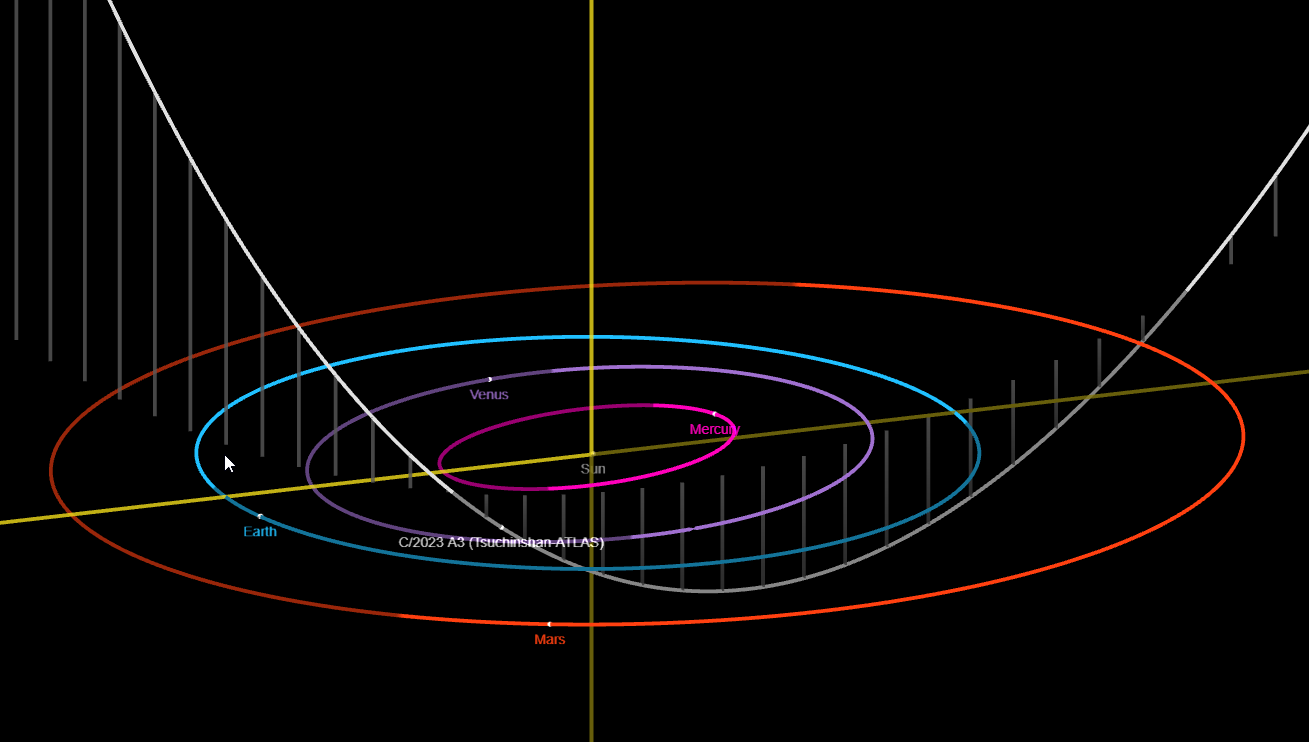
In September and early October 2024, Comet 2023 A3 was visible from more southerly locations, with the best views coming from the southern hemisphere. This is due to the angle of the comet’s orbit to the plane of the solar system – it came in from the north when still faint, dove down to the southern reaches as it rounded the Sun in late September, and will now be rocketing northward again. The comet passes almost between the Earth and Sun on October 9, and after that will begin to appear in the evening sky.
There are two factors which influence the comets visibility in October: how far away from the Sun it is, and how far away from the Earth it is. In general, the comet is intrinsically brightest when it is closest to the Sun and closest to the Earth, but that doesn’t mean we can see it. When the comet it “brightest”, it will also be so close to the Sun from our point of view that it will be invisible. We have to wait until the comet moves farther from the Sun in our sky so we have a chance to seeing it in a semi-dark sky.
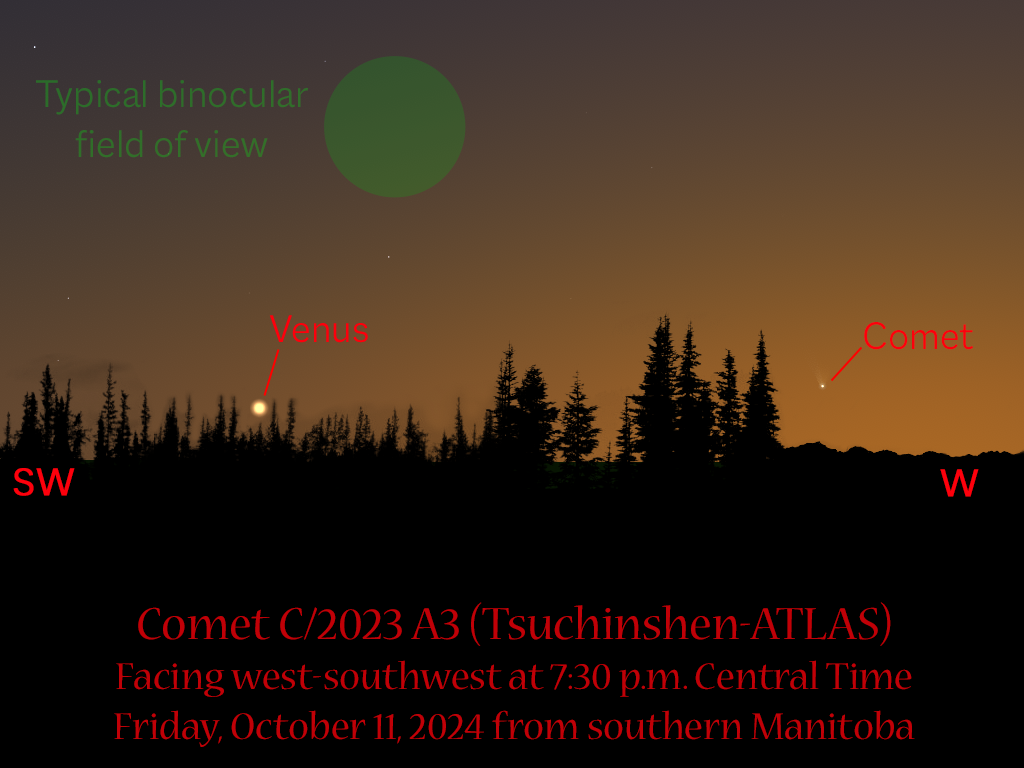
Oct 11, 2024: First Glimpse
Baring some unusually outburst from the comet, Manitobans will probably get our first view of Comet Tsuchinshen-ATLAS right after sunset on the evening of October 11th. You’ll need a very flat western horizon, with as few buildings or trees in the way as possible; a flat prairie or even the ocean-like horizon of Lake Winnipeg will be perfect. You’ll also want to be away from any local light pollution – outside the city, and away from any streetlights or houselights that will interfere with your view.
Sunset is a few minutes before 6:30 p.m. local time, and as soon as the Sun is fully below the horizon, start scanning the sky along the horizon with your binoculars. Once they sky darkens a bit, you’ll spot Venus, a useful signpost to the comet for the rest of the week. The comet may become visible as a small fuzzy round spot in the bright twilight sky around 7:15 p.m., but the comet is setting so that as the sky darkens, the comet sinks into the murky air near the horizon. Just spotting it tonight will be an accomplishment and a harbinger of things to come.
Don’t give up once the comet official “sets” about 8 p.m. local time – that time is for the comet’s “head”. The tail is extending roughly straight up from the horizon and may become visible as the sky darkens. The geometry of the comet relative to the Earth and Sun changes daily this week, so it’s hard to say how long the tail will be or whether it is bright enough to see on its own – stayed tuned!
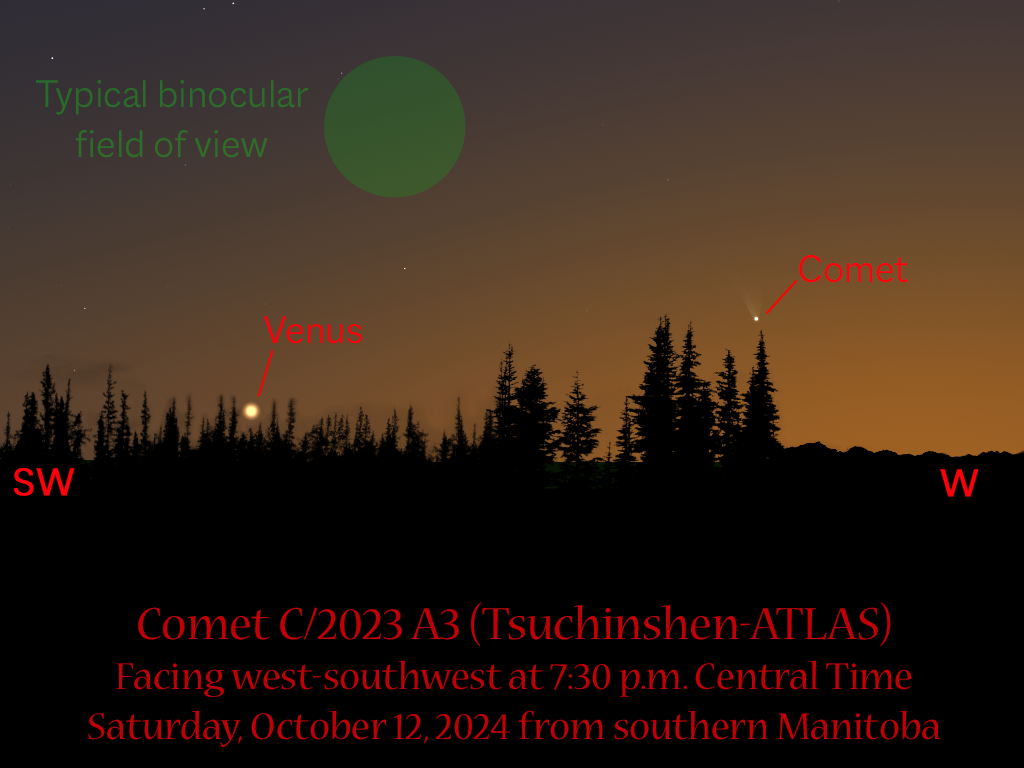
Oct. 12, 2024: Easier to Spot
In just a day, the comet has moved higher in our sky. From this point, things just get better in terms of the comet’s elevation, giving us more time to spot the comet before it sets. You’ll be able to see it longer after sunset, which means it will be visible in a darker sky. Darker skies will be required for spotting the comet’s tail visually, but a camera might pull some of the faint tail out of the twilight (see “imaging the Comet” below).
On October 12th, the comet will be higher in the sky than Venus, but you’ll still want a clear western horizon.
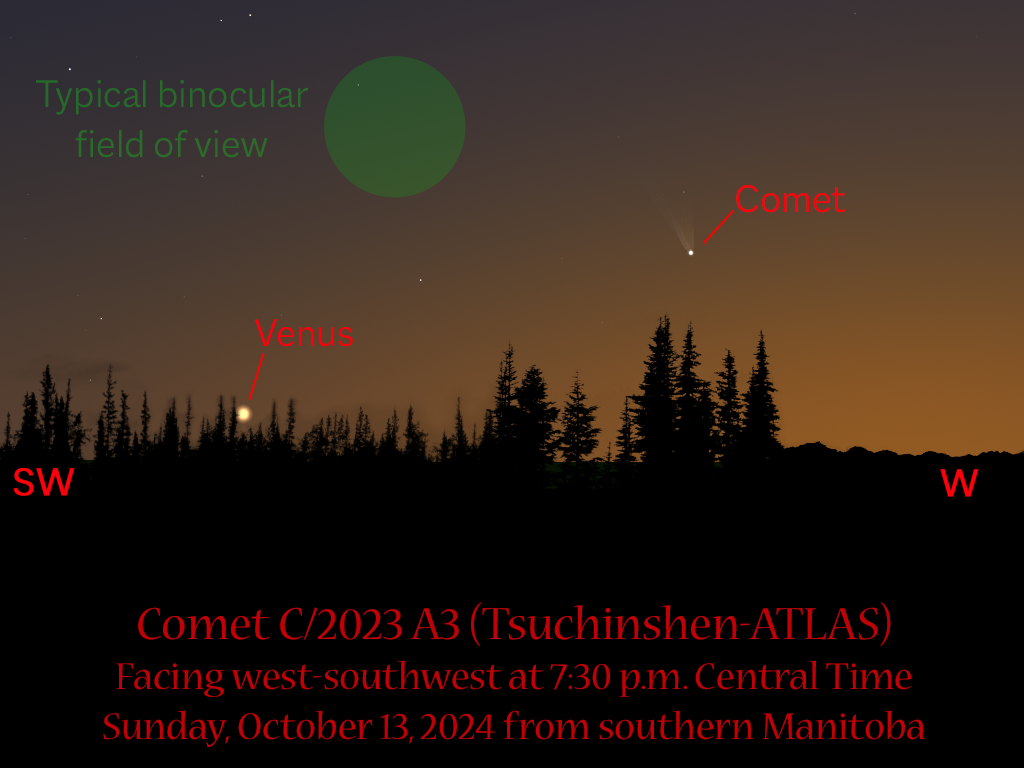
Oct. 13, 2024: Getting Better
The comet is more than a binocular field above the horizon tonight, so you’ll have to sweep around a bit to spot it. The comet should still be bright, and you might even see it without binoculars. The image shows the view at 7:30 p.m. local time, but you can afford to wait even later to see if the view improves as the sky darkens. The comet’s tail actually stretches well off the top of the map, and so even after the “head” of the comet has set, the tail may become visible as the sky darkens. Don’t go home too early!
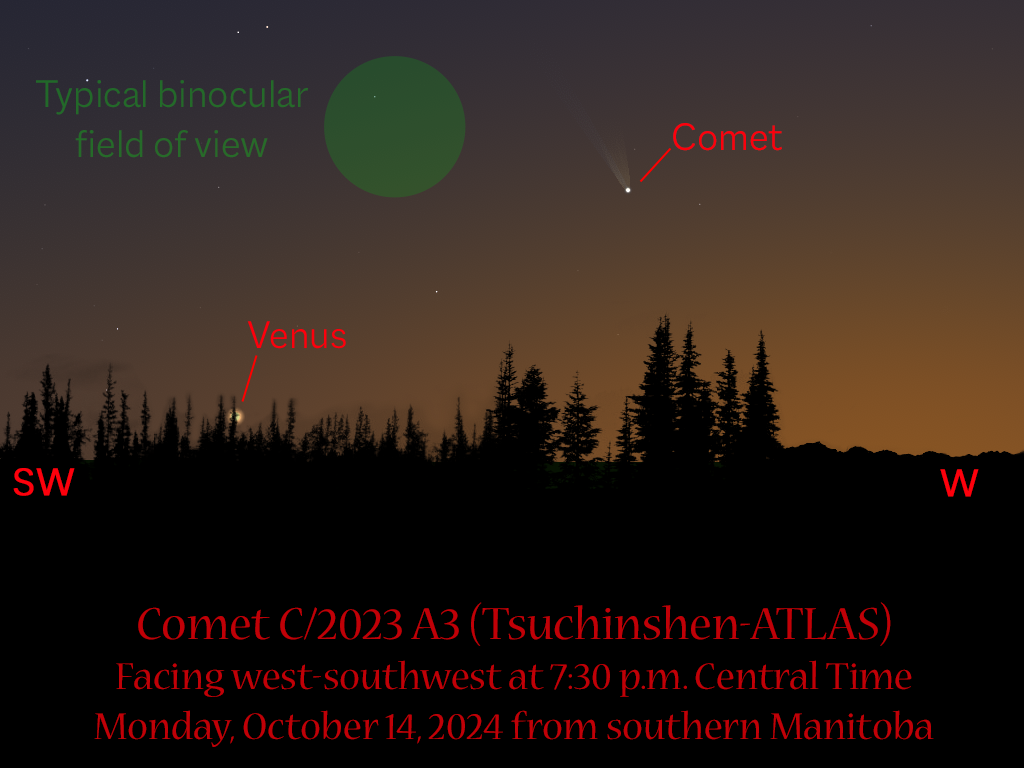
Oct. 14, 2024: Elevation versus Distance
From tonight on, we see how the competing factors of the comet’s elevation above our horizon versus its increasing distance will play out. The comet is actually fading as it moves farther away from us and as the tail appears foreshortened (it’s pointing generally towards the earth, which should make it appear shorter but brighter). Improving the situation is the comet’s greater altitude above the horizon, and the chance to see it in a darker sky after sunset.
It’s still worth getting out early to see how early you can spot the comet, but the best views might come slightly later each night, perhaps as late as 8:00 p.m. local instead of 7:30 p.m. There will be a period of best visibility each night that will probably last for 15 minutes or so as the various factors of sky brightness, altitude, and sky conditions align, but forecasting exactly when that will occur is impossible. The more time you are out observing the comet, the more likely you will get a memorable view.
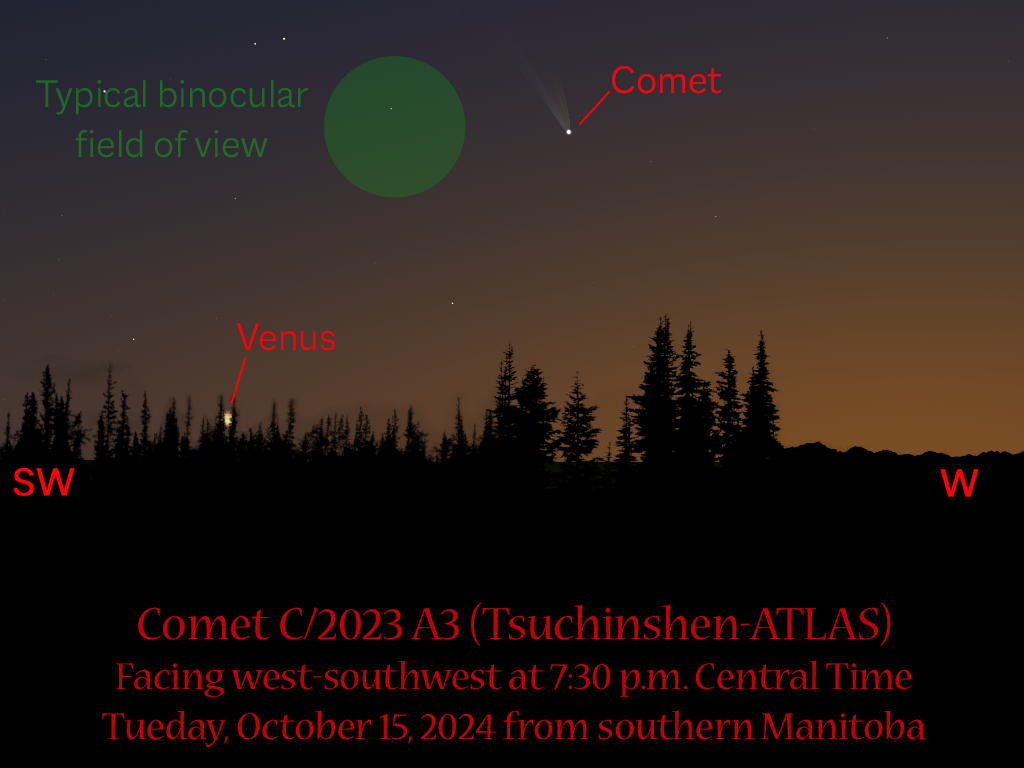
Oct. 15, 2024: Fading Away
Comet Tsuchinshen-ATLAS will be visible above the western horizon at sunset until at least December, but at some point it will fade enough that you will need a telescope to see it. It will probably remain visible in binoculars until late October, but the changing angles will mean the tail fades quickly after this date. The comet will be more of a round puffball than the typical “comet with a tail” shape, but may still be fascinating to view. Remember, that puffball has likely never been this close to Earth before and may not return to our vicinity for tens of thousands of years, if ever, so this literally is a once-in-a-lifetime event.
Imaging the Comet
As always, imaging will show more of the comet’s tail than is visible to the eyes, so you might see impressive images flooding your social media feed for days or weeks to come. Just remember, electronic cameras, even those in a typical cellphone, can show much fainter objects than our eyes can see. But there is something magical about viewing the actual light from an object, individual particles of light than have travelled millions of kilometers to end up inside your eyeball and stimulating your brain to see them.
If you manage to record images of Comet Tsuchinshen-ATLAS, we’d love to see them! Email them to space@manitobamuseum.ca. We’ll show the best ones on Dome@Home, our award-winning online astronomy show, which runs the last Thursday of every month on the Manitoba Museum’s Facebook page and YouTube channel.




